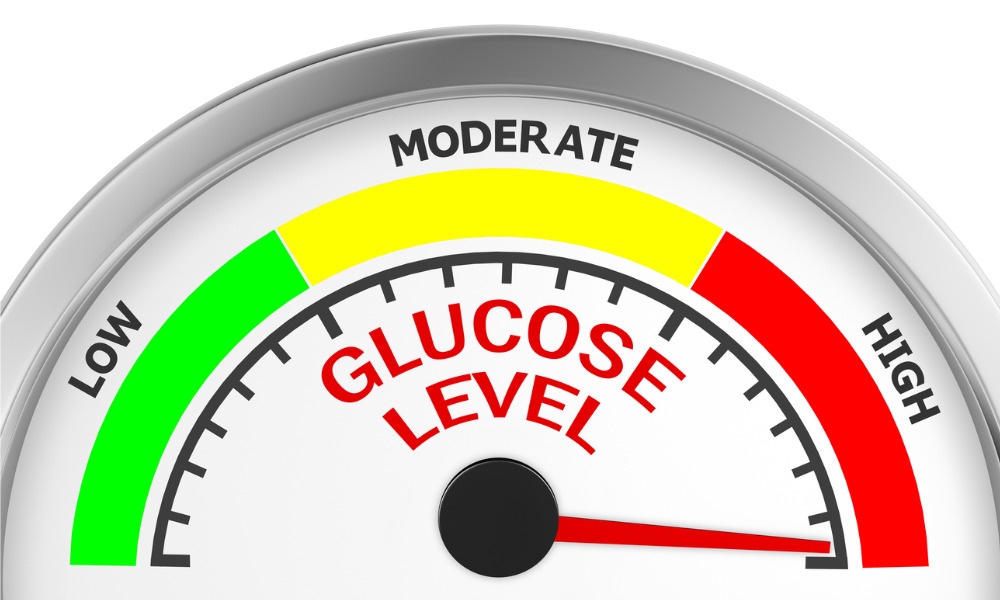Around one in three adults have prediabetes, according to the Centers for Disease Control (CDC). Prediabetes is more commonly seen in people who are obese and those who are 45 years and older.
Being physically active on a regular basis, losing weight (even modestly) and other lifestyle changes can help prevent prediabetes from progressing to full-blown type 2 diabetes. Now a New York University (NYU) study points to an additional strategy: Eating most of your calories early in the day.
The small study took place over two weeks. The researchers looked at how the timing of meals affected blood sugar in 10 participants with obesity and prediabetes, a situation in which a person’s blood sugar is slightly elevated, but not high enough to be considered full-on type 2 diabetes.
All the participants spent one of their two weeks eating as usual, which meant consuming about half of their daily calories after 4 o’clock in the afternoon.The American Diabetes Association recommends that most adults get screened for prediabetes beginning at age thirty-five — earlier if someone is overweight and has additional risk factors for prediabetes or type 2 diabetes.
During the other week, they changed their eating pattern to “intermittent fasting” in which they ate 80 percent of their calories before 1 pm. This is known as early time-restricted eating or eTRF.
The study’s participants all received prepared meals with enough calories to maintain their current weight. They also wore blood sugar monitors 24/7 which showed the beneficial effect of early eating.
During the week of early time-restricted eating, the participants’ blood sugar readings climbed above a healthy range significantly less frequently than during the week when their later meal timing followed their usual eating habits. The results were presented at the Endocrine Society’s annual conference.
“This type of feeding, through its effect on blood sugar, may prevent those with prediabetes or obesity from progressing to type 2 diabetes,” lead study author, Joanne Bruno, an endocrinology fellow at New York University Langone Health in New York City, said in a press statement.
“Based on this data, eTRF may be a helpful dietary strategy for diabetes prevention,” she added. “Further studies are needed to understand the true overall benefit of these intervention strategies.”
Type 2 diabetes is a growing health problem. The American Diabetes Association recommends that most adults get screened for prediabetes beginning at age thirty-five. The ADA also advises diabetes screening before age 35 if someone is overweight and has additional risk factors for prediabetes or type 2 diabetes such as family or medical history, lack of exercise or being older.
If you’re diagnosed with prediabetes, in addition to intermittent fasting there are other ways that can help prevent your condition from developing into type 2 diabetes. They include:Being physically active, losing weight (even modestly) and eating most of your calories early in the day can help prevent prediabetes from progressing to full-blown type 2 diabetes.
- Eating a healthy diet high in fruits, vegetables, nuts, whole grains and olive oil, as well as choosing foods low in fat and calories and high in fiber.
- Becoming more active by aiming for at least 150 minutes of moderate or 75 minutes of vigorous aerobic activity a week, or a combination of moderate and vigorous exercise.
- Losing weight if you’re overweight. Losing just 5 to 7 percent of your body weight — for example, about 14 pounds if you weigh 200 pounds — can significantly reduce the risk of type 2 diabetes.
- Stopping smoking can improve the way insulin works. This will improve your blood sugar levels.
- Taking prescribed medication if your health care provider recommends Metformin. This medication can lower blood sugar levels by helping the body to make less glucose, use its natural insulin better, and reduce the amount of glucose absorbed from your diet. It’s the only medication the ADA recommends to prevents type 2 diabetes. Speak with your health care professional about possible side effects.
The study was presented at The Endocrine Society’s annual meeting in Chicago, Ill, June 15, 2023.





